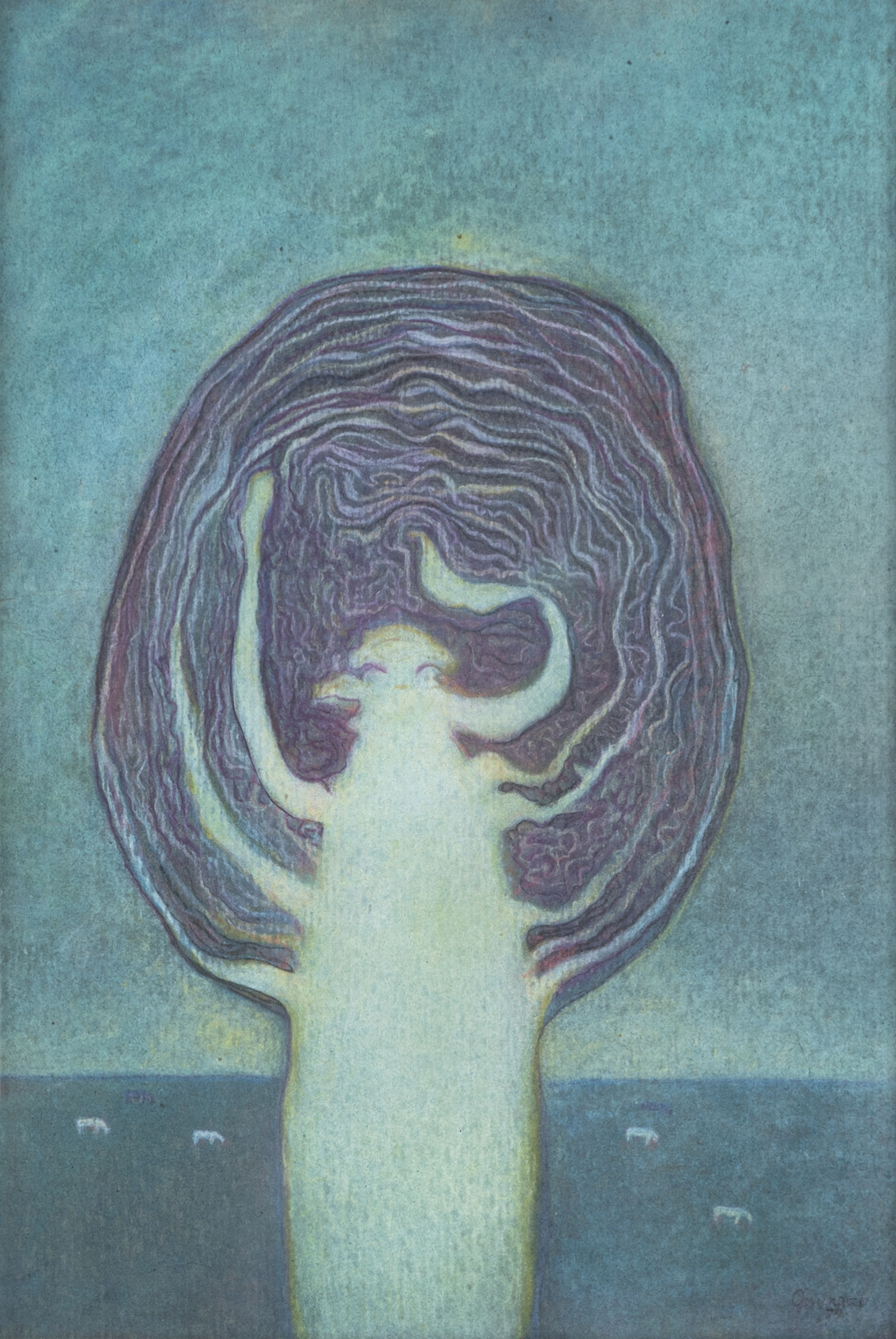Painter, sculptor and restorer, Luis Ouvrard began his training first with Fernando Gaspary, and after with Eugenio Fornells at the Popular Athenaeum. But because his training period with both teachers was so brief, he always viewed himself as a self-taught artist. His first exhibition was at the Salón Nacional in 1918, and ever since he exhibited his works in national and municipal salons. He was very young when he began working at a religious icons workshop that belonged to Germano Parpagnoli and Emilio Sánchez Saez. Soon after, he opened a sculpture workshop with his brother Camilo, who was also a draftsman and a sculptor. In the beginning, the brothers made religious pieces, but later they started making terracotta and plaster dolls, and also doll restoration. His wife Esther, whom he married in 1928, helped them with the doll work. He also restored paintings. Indeed, for a certain period, he was the only restorer in the city of Rosario. His skills as a restorer were much appreciated by his clients, among whom were renowned artist.
He was an important participant in the artistic and bohemian circles of his time, as well as in trade union activity in Rosario. In 1914 he joined a group of artists known as Gente Menuda, including Máximo Medina, Manuel Zamora, Melfi, Palau, and the Sánchez Saez brothers. Luis Ouvrard, like artist Antonio Berni, had won a scholarship from the aristocratic Jockey Club to travel to Europe, a trip he could not make because his mother was ill and for financial reasons. He nevertheless
maintained correspondence with Antonio Berni. Ouvrard and Berni’s families were neighbors; their mothers would sit and chat in Ouvrards’ back yard. In 1925 the Nexus group was formed having Guido, Manuel Musto, Demetrio Antoniadis, José Fantin, Manuel Ferrer Dodero, Antonio Daniel Palau, Nicolás Melfi, Eduardo Barnes, Lucio Fontana, Antonio Berni, Emilio Sánchez Sáez, Augusto Schiavoni, José Marín Torrejón and Luis Ouvrard as founding members. After winning the second medal at the Rosario Salon in 1925, he took part in the First Artists’ Salon of Rosario in 1926, which had been organized by the Nexus group. He won a prize for his Portrait; Manuel Musto and Antonio Berni also won prizes. In addiCon, Ouvrard parCcipated in the Refugio Visual ArCsts’ AssociaCon , formed in 1932, with many other artists. In 1936 he joined the “9 Artists” Association with Augusto Schiavoni, José Beltramino, Félix Pascual, Eugenio Fornells and Demetrio Antoniadis, among others. In 1941 he participated in the formation of the Provincial School of Fine Arts with Nicolás Melfi, Lucio Fontana, Fausto Hernández, Félix Pascual, Manuel Ferrer Dodero, Oscar Herrero Miranda and César Caggiano. Since then and until 1955, Luis Ouvrard taught the course of “Colors”. The school operated until 1979 in the building located on n. 474 San Martin Street in Rosario.
In 1942 he joined the Independent Visual Artists Association, with Nicolás Antonio de San Luis, the Paino brothers, Anselmo Piccoli, Leónidas Gambartes, Juan Grela and Julio Vanzo. He won the Cecilia Griergson’s prize of the National Salon of that year. In 1969, after 51 years working as a painter, he had his first solo exhibition at the Renom Gallery in Rosario. It was sponsored by the artist Gustavo Cochet and the art collector Isidoro Slullitel.
In 1980 the Castagnino Museum held a retrospective exhibition of Ouvrard’s work. In 1981 the Municipal Museum of the Visual Arts “Sor Josefa Díaz y Clucellas” of the City of Santa Fe set a solo exhibition. In his life, he participated of numberless collective shows in the cities of Rosario, Santa Fe, Córdoba and Salta. The Krass Gallery dedicated several solo exhibitons of his works. His works are present in the collections of the Castagnino+macro Museum and the Provincial “Rosa Galisteo de Rodríguez” of the Fine Arts. In 2016, Castagnino+macro Museum organized the anthological exhibition La llave de los sueños. Luis Ouvrard. Obra reunida (The key to dreams – Luis Ouvrard, Assembled works), which brought together 130 of the painter’s works, including works inherited by his family, those in the Museum’s collection, as well as works owned by collectors, including pastels, oil paintings, drawings and engravings. In 2016 the book “Ouvrard. Pain6ngs and Drawings 1916-1986” was published by Editorial Municipal de Rosario-Ivan Rosado Publishers. In March 2023 Calvaresi Gallery presented more than 30 works by the painter in an exhibi6on called “On the road – Luis Ouvrard”, most of which are owned by the Gallery and some belong to private collectors. Most of these works were not exhibited in the 1980s retrospective of the Castagnino Museum nor in the Anthological exhibition of 2016. Simultaneously, the Editorial Ivan Rosado Publishers – represented by Maximiliano Masuelli and Ana Wandzik – also organized a show dedicated to the artist which included works in the Ouvrard family’s and of the Masuelli- Wandzik’s collection.


 Ouvrard Luis
Ouvrard Luis